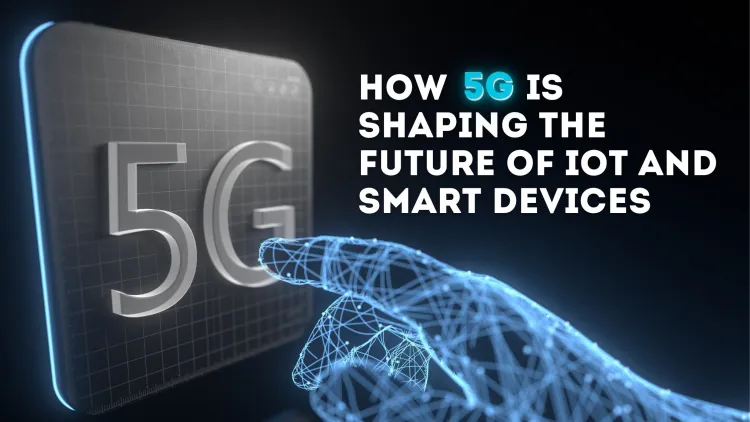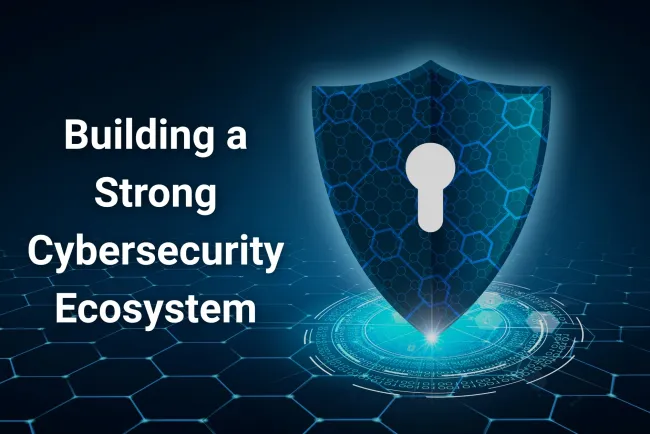How 5G is Shaping the Future of IoT and Smart Devices
This blog delves into the transformative role of 5G technology in enhancing mobile connectivity and driving the growth of the Internet of Things (IoT). It explains how 5G offers significantly faster speeds, ultra-low latency, and the ability to support more devices compared to previous network generations. The blog discusses the impact of 5G on various industries like healthcare, smart cities, and autonomous vehicles, while also addressing challenges such as infrastructure costs and security risks. Ultimately, it highlights the promising future of 5G in creating a more interconnected and intelligent world through IoT applications.

The advent of 5G technology is transforming how we connect, communicate, and leverage technology in our daily lives. As the fifth generation of wireless communication, 5G represents a major leap in speed, efficiency, and reliability, compared to its predecessors. It is not just about faster mobile internet it’s about revolutionizing the Internet of Things (IoT) and paving the way for smarter, interconnected systems. This blog delves into the impact of 5G on mobile connectivity and IoT in detail.
What is 5G, and Why is It Important?
5G, short for fifth-generation wireless communication, is the latest standard in mobile networks. It builds on the foundation laid by previous generations (1G to 4G) but offers groundbreaking advancements.
Key Features of 5G
- Blazing Speeds: 5G can deliver data speeds up to 10 Gbps—about 100 times faster than 4G.
- Ultra-Low Latency: Latency, or the time it takes for data to travel from one point to another, can be as low as 1 millisecond in 5G networks, compared to 30-50 milliseconds in 4G.
- Massive Device Connectivity: 5G supports up to 1 million devices per square kilometer, enabling large-scale IoT ecosystems.
- High Reliability: 5G ensures stable connections, even in crowded environments like stadiums or urban centers.
- Energy Efficiency: 5G networks are designed to be more power-efficient, benefiting both devices and the environment.
The Impact of 5G on Mobile Connectivity
5G has redefined mobile connectivity, offering unprecedented speed and performance. Here’s how it impacts mobile users:
1. Superior User Experience
With 5G, users can stream 4K and 8K videos without buffering, download large files in seconds, and enjoy lag-free online gaming. Faster connectivity means less time waiting and more time enjoying content.
2. Real-Time Communication
5G’s low latency makes real-time communication seamless. High-definition video calls and virtual meetings become smoother, even with multiple participants or in crowded areas.
3. Advanced Mobile Applications
Applications leveraging augmented reality (AR), virtual reality (VR), and artificial intelligence (AI) can now run efficiently on mobile devices. This opens up new possibilities for entertainment, education, and professional training.
4. Boosting Productivity on the Go
Mobile professionals can upload and download large documents, access cloud-based software, and collaborate with teams in real-time, improving productivity.
5. Expanding Connectivity to Rural Areas
5G has the potential to bridge the digital divide by delivering high-speed internet to rural and underserved regions. This can enhance access to education, healthcare, and e-commerce in these areas.
The Impact of 5G on IoT
IoT refers to the interconnected network of devices that communicate and share data. The capabilities of 5G are essential for scaling IoT applications across industries.
1. Smart Cities
5G enables smart city solutions such as:
- Real-time traffic management systems to reduce congestion.
- Smart lighting systems that save energy by adjusting to usage.
- IoT-enabled waste management for efficient disposal.
These improvements make cities safer, more efficient, and environmentally friendly.
2. Healthcare Revolution
The combination of IoT and 5G is transforming healthcare:
- Remote surgeries: Surgeons can perform operations from miles away using robotic arms controlled via 5G.
- Real-time health monitoring: Wearable devices can track patients' vitals and alert doctors instantly in case of abnormalities.
3. Industrial Automation
5G-powered IoT devices in factories enable:
- Real-time monitoring of machinery to prevent breakdowns.
- Remote control of robots for precise manufacturing.
- Optimized supply chain operations with interconnected sensors.
4. Smart Homes
IoT-enabled devices like smart thermostats, security cameras, and voice assistants operate more efficiently with 5G, providing instant responses and seamless control.
5. Autonomous Vehicles
Self-driving cars rely on IoT sensors to navigate and communicate with traffic lights, other vehicles, and road infrastructure. 5G ensures these interactions happen instantly, enhancing safety and efficiency.
Challenges in 5G Adoption
Despite its potential, 5G faces several challenges:
- Infrastructure Investment: Rolling out 5G requires significant investment in new towers, fiber networks, and small cell installations.
- Device Compatibility: Older devices cannot use 5G networks, requiring users to upgrade their smartphones, tablets, and IoT devices.
- Cybersecurity Risks: The vast number of connected devices increases the attack surface for hackers, necessitating robust security measures.
- Regulatory Hurdles: Spectrum allocation and government policies can delay 5G deployments in certain regions.
Future Possibilities with 5G
The full potential of 5G is yet to be realized. Some exciting possibilities include:
- Smart Agriculture: IoT devices powered by 5G can monitor soil conditions, weather, and crop health, improving yields.
- Enhanced Robotics: Robots can operate with greater precision in industries ranging from manufacturing to healthcare.
- Immersive Experiences: AR and VR experiences will become more realistic, driving innovation in entertainment and training.
- Connected Ecosystems: From smart cities to smart homes, interconnected systems will become the norm, simplifying everyday life.
Conclusion
5G is not just an evolution of wireless technology—it’s a revolution that is reshaping industries and everyday life. By enabling faster, more reliable mobile connectivity and powering the growth of IoT, 5G is laying the groundwork for a smarter, more interconnected world. As adoption grows and infrastructure improves, the possibilities are endless, heralding a future where technology seamlessly integrates with our lives.
The journey to a 5G-powered world has just begun, and its impact will only grow as we embrace this transformative technology.
FAQ:
1. What is 5G?
5G stands for the fifth generation of wireless technology, offering faster speeds, lower latency, and the ability to connect many devices simultaneously compared to previous generations.
2. How is 5G different from 4G?
5G is up to 100 times faster than 4G, has ultra-low latency (as low as 1ms), and supports a higher density of connected devices, making it ideal for IoT applications.
3. What does IoT mean?
IoT (Internet of Things) refers to a network of interconnected devices that share data and perform tasks automatically, such as smart home gadgets, wearables, and industrial machines.
4. Why is 5G important for IoT?
5G provides the high-speed, low-latency, and massive connectivity required for IoT devices to function efficiently and communicate in real-time.
5. What industries benefit most from 5G and IoT?
Key industries include healthcare, manufacturing, agriculture, smart cities, transportation (autonomous vehicles), and entertainment (AR/VR experiences).
6. Will 5G work on my current phone?
Older phones and devices may not support 5G. You will need a 5G-enabled device to take advantage of its features.
7. How does 5G improve mobile connectivity?
5G enables faster downloads, seamless streaming of 4K/8K videos, smooth video calls, and a lag-free experience for online gaming.
8. Is 5G safe to use?
Yes, 5G is considered safe and complies with global safety standards for electromagnetic radiation. Extensive research has been conducted to ensure its safety.
9. What challenges does 5G face?
Major challenges include high infrastructure costs, limited device compatibility, cybersecurity risks, and regulatory issues in some regions.
10. What is the future of 5G and IoT?
The future of 5G and IoT includes smarter cities, precision farming, enhanced robotics, advanced healthcare solutions like remote surgery, and a fully interconnected digital ecosystem.














![Top 10 Ethical Hackers in the World [2025]](https://www.webasha.com/blog/uploads/images/202408/image_100x75_66c2f983c207b.webp)








